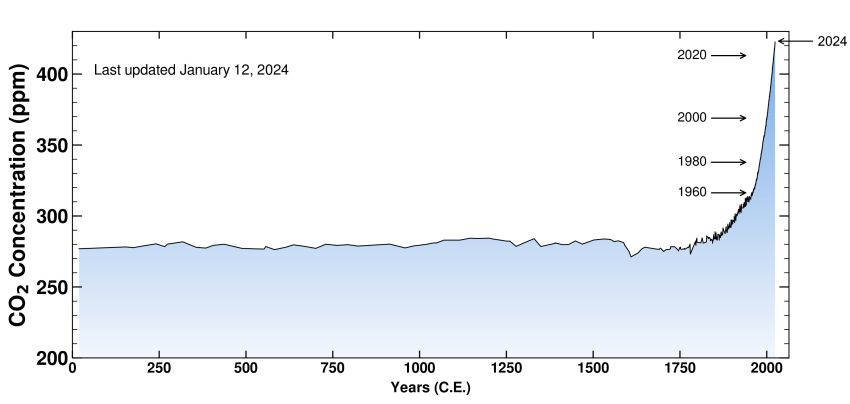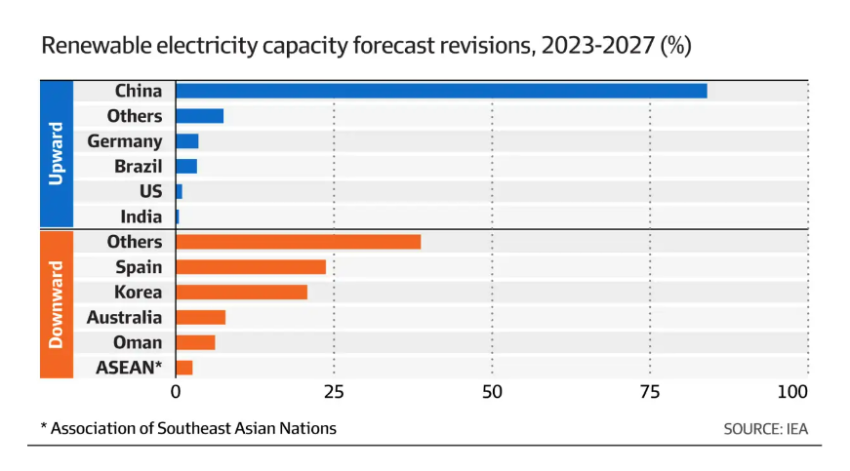
Alarmingly — but not surprisingly — 2023 was the hottest year since 1850, when records were begun.
The European Commission’s Copernicus Climate Change Service (C3S) said every day of last year was more than 1°C warmer compared to the pre-industrial period: 2023 overtook 2016 as the warmest year on record.
It predicts that the year ending in February 2024 will exceed 1.5°C above the pre-industrial level.
If this is the case, the 2016 Paris Agreement has well and truly failed: its goal was to limit global temperature rises to 1.5°C.
The world is now entering a dangerous new period and, as we well know, no country is immune from the climate catastrophes that accompany global warming.
The mainstream media’s reporting, however, implies that Australia is on top of this existential challenge.
And with billionaire mining magnate Andrew “Twiggy” Forrest now on board the renewables train, we’ve got it, right?
Australia’s second-richest person has now “gone green”: he is even campaigning against Woodside’s controversial Scarborough gas project, including accusing that mining conglomerate of engaging in a “furious race to destroy the planet” for profit.
But Forrest is no climate hero.

His relationship breakdown with oil and gas giant Woodside should not blind us to the fact that he is positioning himself for more government support as his Fortescue Metals Group (FMG) “diversifies” to become a green energy powerhouse. FMG, worth $82.4 billion, made its wealth mining iron ore in the Pilbara, primarily for export.
Climate minister Chris Bowen was there with Forrest as he announced his new wind energy project in western New South Wales in early January.
Labor’s support for FMG is evident: it gave it $13.7 million for a green hydrogen project in 2022 and the Coalition was just as generous.
The major parties agree that taxpayers should subsidise mining and fossil energy projects.
The Australia Institute estimated last year that fossil fuel subsidies amounted to a record-breaking $57.1 billion (up from the $55.3 billion in 2022).
Shamefully, the sums are 14 times the amount the government invests in the Australian Disaster Ready Fund, which was created as part of the government’s greenwashing, but which needs to become real given the damage caused by erratic weather events.
Australia’s focus on “mitigation” and private green energy, rather than a planned phase-out of fossil energy including upscaling the grid, is another part of the problem.
The International Energy Agency believes that Australia’s (privatised) boom in rooftop solar is holding back the country’s green energy growth.
It said the country is being held back by the “lack of new federal incentives” and that the expansion of clean energy is “lagging the tripling of capacity by 2030 that was agreed at the COP28 climate summit in December”.
COP28’s failure, epitomised by its final text urging only a “go slow”, not a “phase-out” of fossil fuels, seems to have emboldened Bowen to limit Labor to handing the energy transition, such as it is, to private corporations like FMG.
This underscores Australia’s failure to plan the transition to renewables, despite an abundance of wind, solar and geothermal energy sources.
It also wrongly suggests that governments don’t have to lead on climate energy policy.
Labor is not only failing us, it is endangering the peoples of the Global South — including our closest vulnerable neighbours in the Pacific – who pay the highest price for global warming.
Australia signed on to the COP28 pledge in Dubai to boost renewable energy capacity three-fold by 2030 and double energy efficiency improvements.
But the privatised nature of any such shift means that public infrastructure has not kept up: the energy grid — still in public hands — is not fit for purpose.
Energy consultants self-servingly argue that this points to the need for more privatisation to deal with the grid problem, when the opposite is true.
As energy is an essential service, the shift to renewable energy — which will have to happen — would be more easily done in public hands.
China is an example: it delivered as much solar capacity last year as the rest of the world did in 2022.
According to the IEA, China will account for almost 60% of renewable generation worldwide by 2028. As a result, its demand for coal is expected to fall this year and plateau through to 2026.
Meanwhile, Labor is contemplating 116 new coal, oil and gas projects.
If you, like us, believe that 2024 has to be the year to act on the climate emergency, became a supporter of Green Left and make a contribution to our 2024 Fighting Fund.
